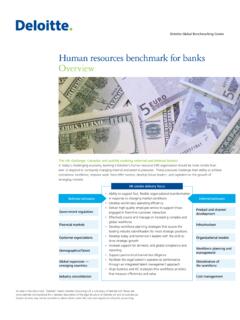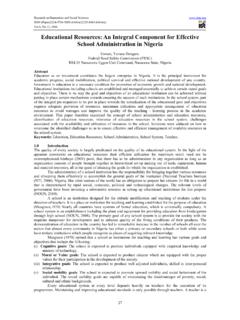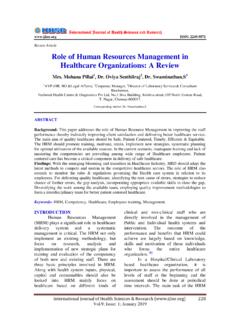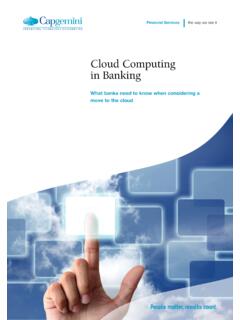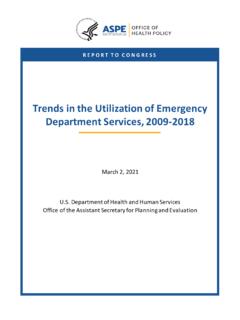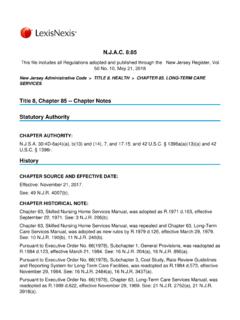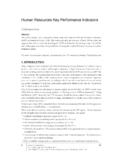Transcription of Human Resource Models - Weebly
1 Human Resource Models Human Resource Models What is a Human Resources (HR) Model and what role does it play in the development of a successful business? A HR Model is an organization's strategic framework that helps manage and organize all business functions concerning Human capital. It allows a company to manage its labor force as effectively and efficiently as possible. The key role of a HR Model is to facilitate day-to- day operations and plan for future opportunities related to the Human capital of the business. These theoretical Models are meant to better manage employees and determine Image provided by accountability.
2 According to David Ulrich, a leading expert in Human Resource theory and application, most managers are not fully utilizing their employees. David Ulrich states, The greatest concern here is that, in the New Economy, Human capital is the foundation of value creation. (Various studies show that up to 85 percent of a corporation's value is based on intangible assets.) This presents an interesting dilemma: The asset that is most important is the least understood, least prone to measurement, and hence, lease susceptible to management (4) is Human capital. There are, however, a variety of ways to organize and operate the Human Resource function in organization.
3 Moreover, HR organizations are often in flux. Research shows one in three businesses will restructure their HR structure in 2013-2014 to better meet the employee's needs (Towers Watson, 2). With the changing nature of HR in today's world we wanted to know what type of HR Models were being used and how HR professionals felt about each model: their pros and cons. Then we created an 18- question survey and sent it to 566 HR employees in 6 different industries. The team identified these individuals using LinkedIn, Lead411, and the University's Alumni Office. 122 participants fully completed the survey and 68 individuals partially completed the survey responses.
4 All surveys that were included in this study were over 60% complete. According to the survey data, the following are the most popular HR Models that businesses are adopting into their business strategy: v Business Partner Model v Solution Center Model v Shared Services Model Human Resource Models 2. The remainder of the article will cover the following about each HR model: Each model's basic logic and framework Each model's advantages & disadvantages from the standpoint of those HR professionals we surveyed Summary data comparing the 3 Models For the purpose of this report, we averaged the data we collected on each survey question so we could more easily compare the results across all three Models .
5 The average HR ratio we calculated is defined as the number of HR employees over the number of non-HR employees. This ratio can be useful but needs to be used with caution because the HR ratio is heavily influenced by company size. To find current technology trends within HR, we also asked survey respondents to indicate their company's planned change in spending for HR technology in the coming calendar year. Human Resource Models 3. Business Partner Model -Description Figure The Business Partner Model began in 1997. when Dave Ulrich's book, Human Resource Champions , was released.
6 Before that time, HR had consisted mainly of administrative tasks performed by generalists or groups of specialists. HR employees often felt that their function within companies was not well- respected or acknowledged by the firm (Jamieson). As companies worked to become Image provided by more efficient and ensure that all company functions were contributing to profitability, they pressured HR to contribute more to the company's strategy and its bottom line. As a result, HR specialists developed the BP Model was the primary solution (See Figure ). The main purpose of the Business Partner Model is to strategically connect a company's Human capital with the business and its goals (Lambert 7).
7 This is accomplished by assigning a Business Partner (BP). to specific business divisions or geographical areas. These BPs focus on the specific Human capital needs of the department's division or region and use their knowledge of the business and HR to address the business needs as efficiently as possible. Business Partner Model - Survey Results Background About This Model's Survey Participants: See Table 1 below. Table Human Resource Models 4. Business Partner Model Advantages and Disadvantages Advantages: Division and line managers appreciate having one contact for all of their HR needs and do not need to communicate with different HR people for every different task they need to have done.
8 The Business Partner Model improves company efficiency by placing the primary emphasis for HR on understanding and furthering the company strategy instead of just doing administrative work. Instead of being unconnected from what is important to the company, HR professionals are an integral part of furthering company objectives. According to Corporate Research Forum, when a company changes to a Business Partner Model, HR. functions should then comprise fewer, better deployed and more effective professionals, better able to contribute to business agendas (Lambert 7). Companies will be able to accomplish the same amount with fewer HR employees, thereby improving department efficiency.
9 Disadvantages: If a company does not do a good enough job automating or outsourcing administrative HR tasks, BPs can become tied down with transactional work and administration. BPs are then unable to focus on the strategic functions that are their primary responsibility and HR cannot meet the needs of the business. BP's become paper pushers and will be taking care of day-to-day needs. They will not be able to strategically plan for the future. In the long run, the organization will choke and die if the BP's get bogged down with administrative activities that can be easily outsourced.
10 If not handled correctly, line managers can think that BPs are adding more work for them to do instead of reducing their workload and making things easier for them. BPs must ensure they are working with line, division managers in such a way that manager's feel that their job is made easier (Lambert 10). Often, BPs are not completely clear on what their responsibilities include. Managers may feel they need to have all the answers and do everything HR related for their customer. Conflicting views between BPs and employees in Centers of Excellence may arise regarding who is responsible for certain tasks (Holley 11).
